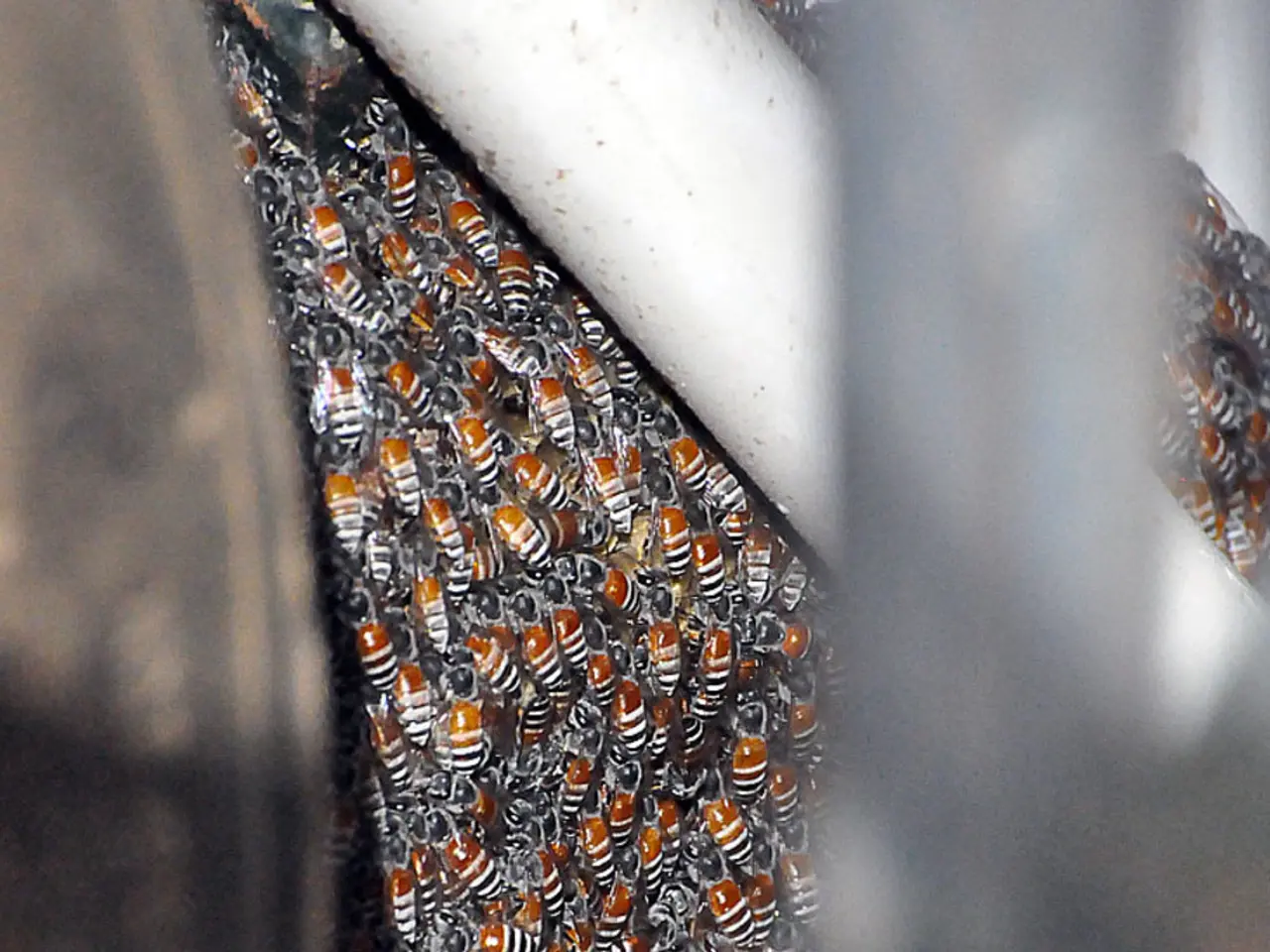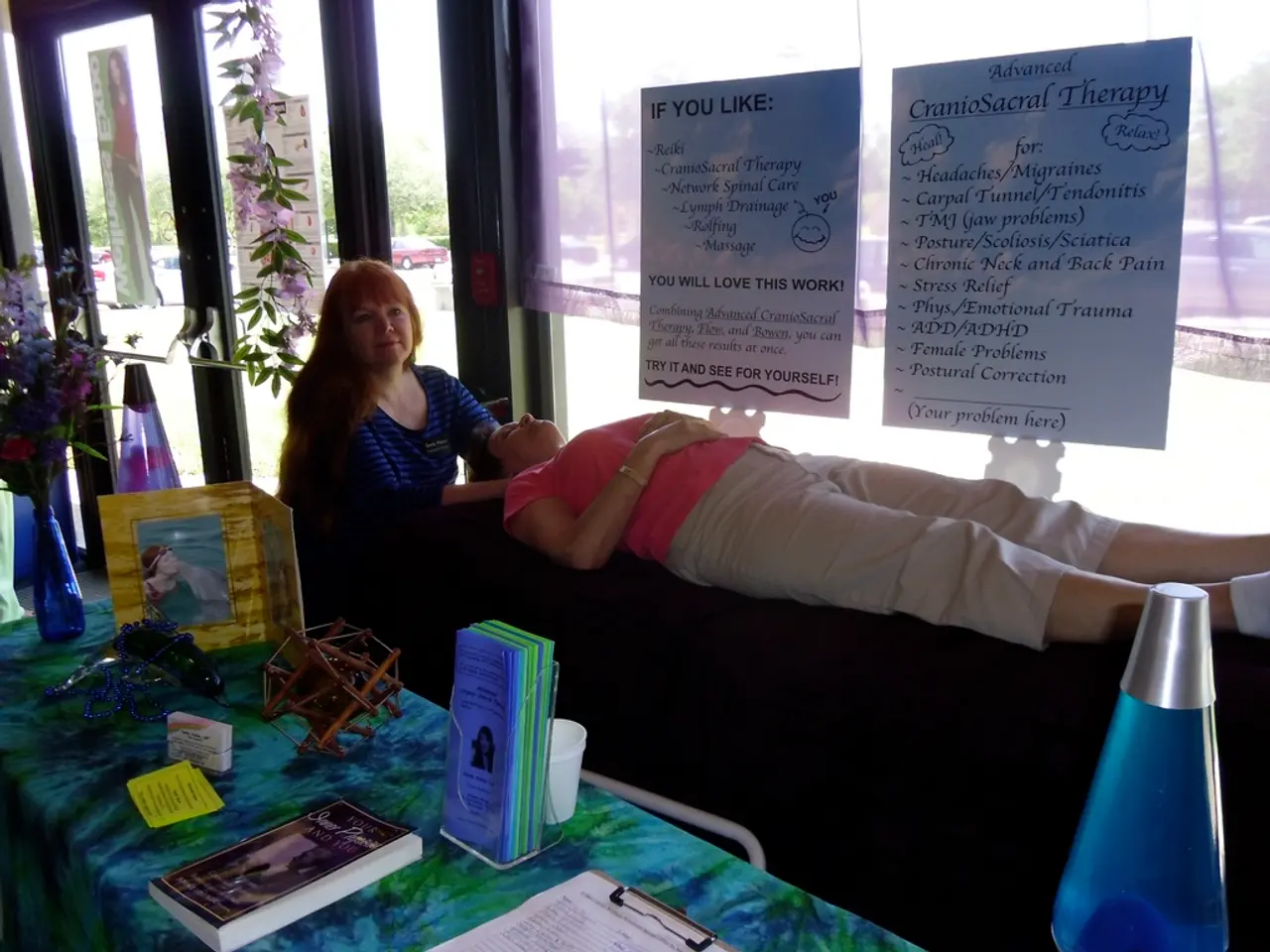Sting Relief: Identifying Effective Remedies for Wasp Agony
In the event of a bee or wasp sting, quick and careful action can help alleviate discomfort and prevent complications. Here's a guide on how to treat these stings at home effectively.
Firstly, remove the stinger promptly by gently scraping it out with a fingernail, a piece of gauze, or even a plastic card. Avoid squeezing or pinching the skin as this could push more venom into the wound [3]. After removing the stinger, wash the affected area with soap and warm water to prevent infection [1][4].
Next, apply a cold compress or an ice pack wrapped in a clean cloth to the sting site for 10-20 minutes. This helps reduce pain, swelling, and inflammation [1][3]. If cold water or ice is not available, saliva can provide temporary relief [6].
For additional relief, you can use home remedies such as a baking soda paste or witch hazel [1]. Over-the-counter pain relievers and antihistamines can also help alleviate discomfort and itching [2][5]. However, it's essential to avoid scratching the area to prevent infection.
It's important to be aware of potential complications, such as signs of a severe allergic reaction (anaphylaxis). Symptoms of anaphylaxis include difficulty breathing or wheezing, swelling of the face, lips, tongue, or throat, rapid heartbeat, dizziness, loss of consciousness, nausea or vomiting, and extensive hives or rash beyond the sting site [2][3][5]. If any of these symptoms occur, call emergency services right away.
For less severe but worsening local reactions such as increasing redness, swelling, or signs of infection (pus, warmth, fever), seek medical advice to prevent complications [4][5].
In summary, prompt stinger removal, cleaning, cooling, and monitoring for allergic symptoms are essential for safe and effective home treatment of bee or wasp stings. It's also crucial to be cautious when using home remedies, such as onions, which can irritate the skin due to their acidic nature [5]. Always remember, when in doubt, seek medical attention.
In case of a suspected allergic shock due to an insect sting, call the emergency number 112 immediately. If an insect stings in the mouth or throat, suck on ice or ice cubes and apply a cold compress to the neck until help arrives.
Stay safe and bee-aware this summer!
References:
[1] Mayo Clinic. (2021). First aid: Bee stings and hornet stings. https://www.mayoclinic.org/first-aid/first-aid-bee-stings-and-hornet-stings/basics/art-20061133
[2] NHS. (2021). What to do if you're stung by a bee or wasp. https://www.nhs.uk/live-well/healthy-body/what-to-do-if-youre-stung-by-a-bee-or-wasp/
[3] American Academy of Allergy, Asthma & Immunology. (2021). Bee stings and wasp stings. https://www.aaaai.org/conditions-and-treatments/library/allergy-library/bee-stings-and-wasp-stings
[4] Cleveland Clinic. (2021). Bee stings: First aid and home treatment. https://my.clevelandclinic.org/health/diseases/15678-bee-stings-first-aid-and-home-treatment
[5] WebMD. (2021). Bee sting first aid. https://www.webmd.com/first-aid/bee-sting-first-aid
[6] National Library of Medicine. (2021). Saliva: A potential antidote for bee venom. https://www.ncbi.nlm.nih.gov/pmc/articles/PMC2977962/
Maintaining a balanced diet rich in nutrients contributes to overall health-and-wellness. For instance, incorporating skin-care-friendly foods like fruits and vegetables, which are high in antioxidants, can help promote clear, healthy skin [7].
Adopting a consistent skin-care routine, combining good nutrition with appropriate products tailored to your skin type, can further enhance your skin's health and youthful appearance [7].




